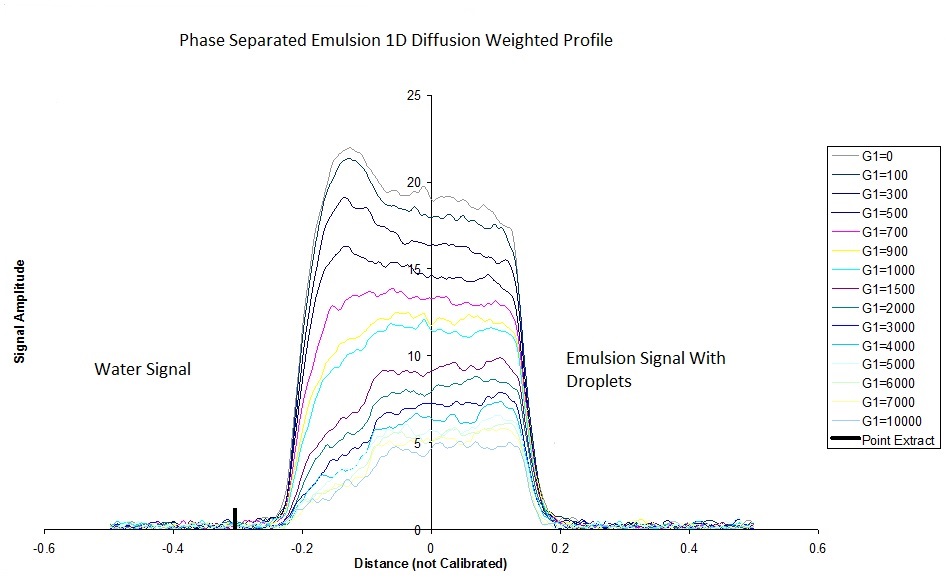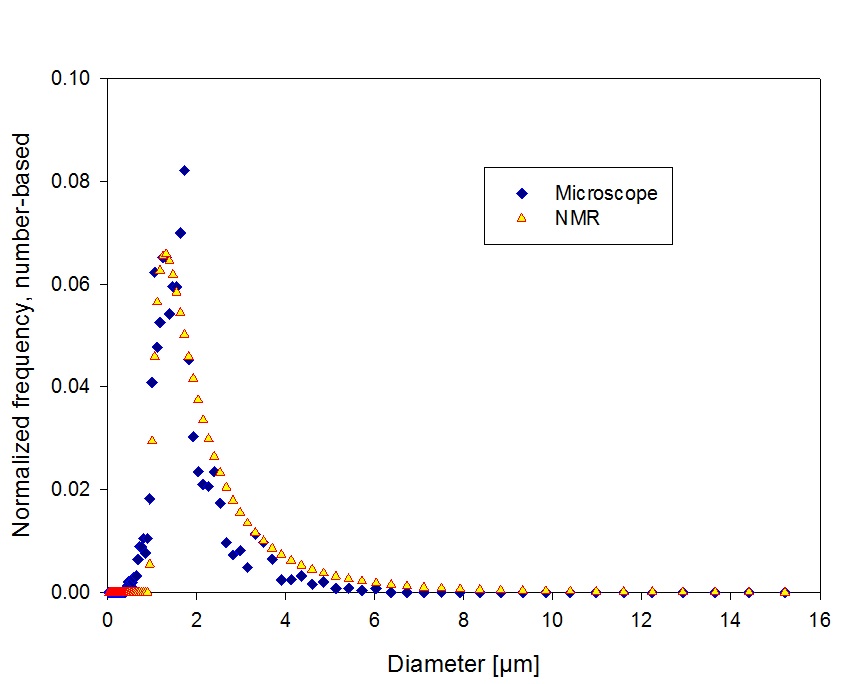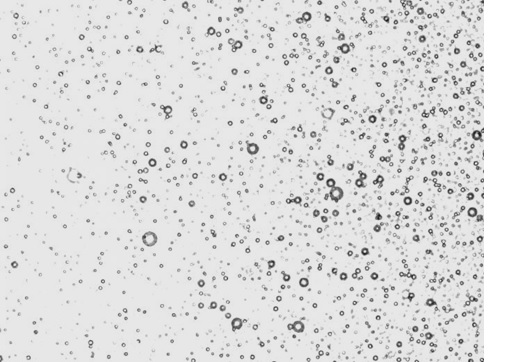Emulsion Applications
CPMG, Droplet Sizing and Diffusion MR
Experiments. Integrated Software Allows Simple Data Acquisition and
Analysis
Variable Temperature Studies from -50 to +150 degrees C and Strong Magnetic Field Gradients for Probing the Smallest Distance Scales
Multi Nuclear Probes for Simple Phase Identification
Automated Time Series Experiments to Investigate Phase Separation Dynamics
Variable Temperature Studies from -50 to +150 degrees C and Strong Magnetic Field Gradients for Probing the Smallest Distance Scales
Multi Nuclear Probes for Simple Phase Identification
Automated Time Series Experiments to Investigate Phase Separation Dynamics

Diffusion Weighted 1D Profiles in a phase separated emulsion.
Signal remaining at the right is due to emulsion droplets. Towards the left the concentration of droplets and signal size is reduced.


Magnetic Resonance can be used for fast, accurate droplet size distribution determination.
Magnetic Resonance measurements correlate well with microscopy results. Data Courtesy of Antek A/S.
About Magnetic Resonance in
Emulsion Analysis
Magnetic
Resonance provides a rapid, non destructive method for emulsion
characterisation. Signal from the disperse phase can be
measured, and the reduction in apparent diffusion co-efficient
used to calculate the droplet size.
Droplet size distributions can be measured in both water oil and oil water systems. The measurement is often highly temperature sensitive, so a thermally stabilised (VT) probe is used. Strong magnetic field gradients are necessary in order to probe small droplet sizes.
The AMR R4 MR Benchtop Analyzer has special features that make it ideal for this application, including accurate sample temperature control, high strength magnetic field gradients and automated software.
Droplet size distributions can be measured in both water oil and oil water systems. The measurement is often highly temperature sensitive, so a thermally stabilised (VT) probe is used. Strong magnetic field gradients are necessary in order to probe small droplet sizes.
The AMR R4 MR Benchtop Analyzer has special features that make it ideal for this application, including accurate sample temperature control, high strength magnetic field gradients and automated software.
Please
Contact Us to discuss your
requirements.
© Advanced Magnetic
Resonance Limited 2012.
